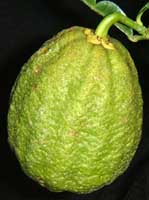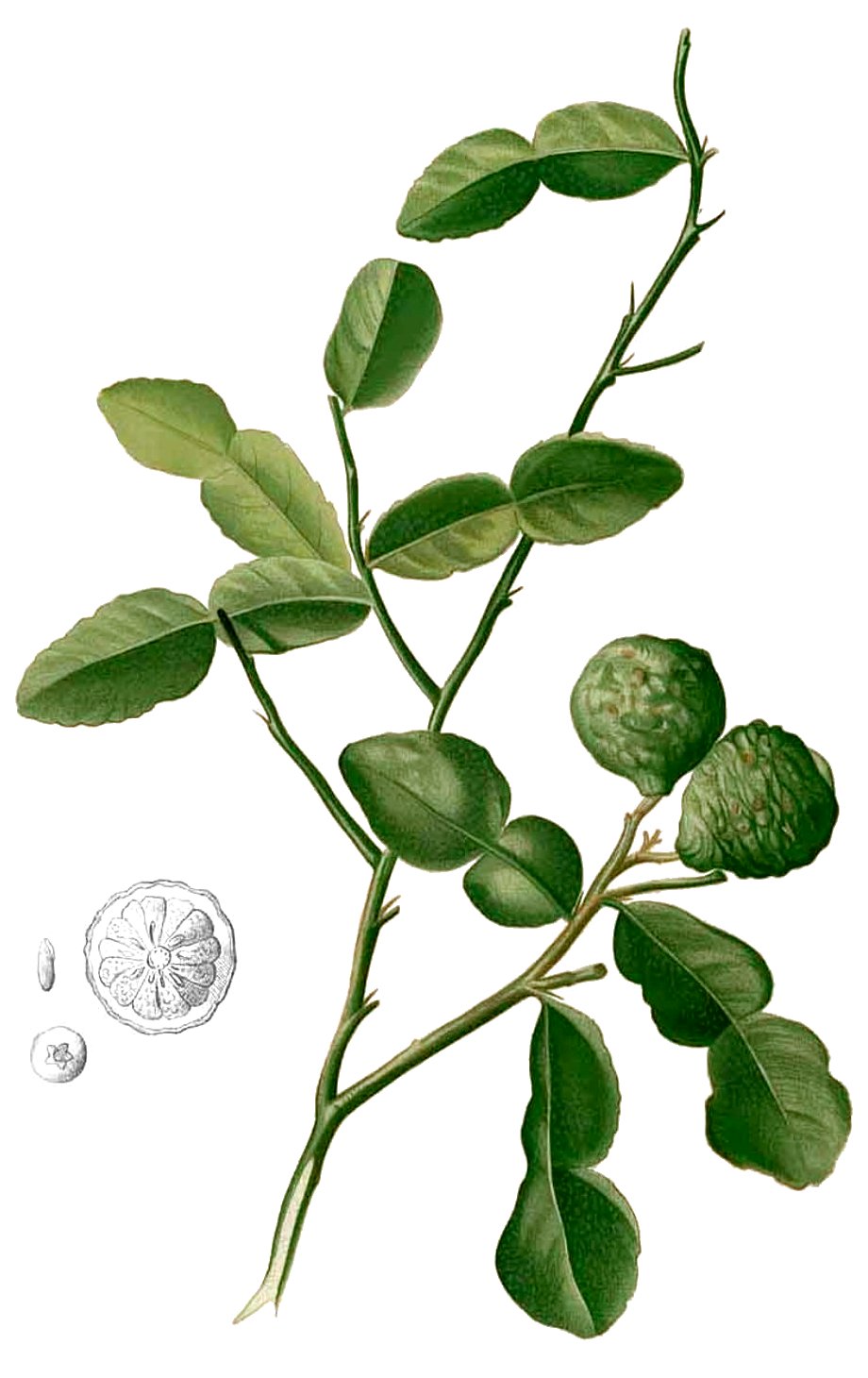|
Papeda (citrus)
Papeda or papaeda is the common name for a group of ''Citrus'' species and varieties native to tropical Asia that are hardy and slow-growing, and produce unpalatable fruit. Walter Tennyson Swingle segregated these species into a separate subgenus, ''Papeda'', that included the Ichang lemon, yuzu, kaffir lime, kabosu, sudachi, and a number of wild and uncultivated species and hybrids. Recent genetic analysis shows the papedas to be distributed among distinct branches of the ''Citrus'' phylogenetic tree, and hence Swingle's proposed subgenus is polyphyletic and not a valid taxonomic grouping, but the term persists as a common name. Because of generally slow growth and bitter, less palatable fruits than in other citruses, papeda species have only limited commercial cultivation. Some species, like ichang papeda, are used in landscaping, while others are important for rootstocking and as genome source for breeding disease-resistant and frost-hardy citrus hybrids. In some cases the ski ... [...More Info...] [...Related Items...] OR: [Wikipedia] [Google] [Baidu] |
Citrus Micrantha
The micrantha is a wild citrus from the papeda group, native to southern Philippines, particularly islands of Cebu and Bohol. Two varieties are recognized: small-flowered papeda (''C. hystrix'' var. ''micrantha''), locally known as ''biasong'', and small-fruited papeda (''C. hystrix'' var. ''microcarpa'') or ''samuyao''. Long viewed as a separate species, ''C. micrantha'', it is now generally viewed to fall within ''Citrus hystrix'', but genomic data on the latter is insufficient for a definitive conclusion. A micrantha was one of the progenitor species of some varieties of lime. Description The micrantha was first described to Western science in 1915 by Peter Jansen Wester, who worked for the Philippine Bureau of Agriculture at the time. Biasong Wester collected ripe fruit specimens of biasong (small-flowered papeda, ''Citrus hystrix'' var. ''micrantha'') on islands of Cebu, Bohol, Dumaguete, Negros, and in the Zamboanga and Misamis provinces in Mindanao. The frui ... [...More Info...] [...Related Items...] OR: [Wikipedia] [Google] [Baidu] |
Citrus Longispina
''Citrus longispina'' (winged lime, blacktwig lime, or megacarpa papeda) is an unusual sweet lime-like citrus that has been classed as a papeda. It is called ''Tai la mi san'' in Chinese, ''Taramisan'' in Japanese and ''Tanisan'' or ''Talamisan'' in the Philippines. Description ''Citrus longispina'' is a attractive citrus tree with striking colors: a background of dark-colored twigs, pale green leaves, and pale yellow fruit. Twigs are unusually dark brown, almost black, hence the name "blacktwig". The tree can reach in height, and often has a spreading bushy appearance. Twigs are commonly long and bent down by the heavy fruit load. Fruits comes in clusters and the flesh has a fair amount of natural sugar and a lime flavor. However it still lacks the intensity of acid found in more common citrus fruits, so some people might find it insipid. The fruit is spherical, about in diameter. The tree has many long, strong thorns, as implicated from the botanical name A botanical name ... [...More Info...] [...Related Items...] OR: [Wikipedia] [Google] [Baidu] |
Citrus Webberi
Kalpi (''Citrus'' × ''webberii'') is a natural citrus hybrid native to Philippines and is today one of the most common lemons in Hawaii, and is sometimes called 'Malayan lemon'. Description The handsome tree is medium-sized, tall. The acidic fruit is very juicy; they are used like lemons. Size is variable, depressed and globose, with 9 to 11 segments and very thin skin, yellowish when ripe. Taxonomy 'Kalpi' is a papeda. It looks somewhat like the common Philippine mandarin orange and the native ''citrus macroptera''. It is named ''webberii'' after Herbert John Webber, by his disciple, abbreviation author Peter Jansen Wester. It has also been referred to incorrectly as ''webberi''. The common name 'Kalpi' is from the Bicolano dialect. It was published as ''Citrus webberii'' Wester in 1915 in Philipp. Agric. Rev. 1915, viii. Distribution 'Kalpi' grows in Luzon and Mindanao Mindanao ( ) ( Jawi: مينداناو) is the second-largest island in the Philippines, after L ... [...More Info...] [...Related Items...] OR: [Wikipedia] [Google] [Baidu] |
Citrus Macrophylla
''Citrus macrophylla'', also known as alemow, is a citrus tree and fruit, belonging to the papedas. The trees are short in stature, more tropical in nature than most citrus, and are very spiny. Taxonomy Alemow is rare and poorly studied, a likely hybrid between the citron and biasong (''C. micrantha''). The large fruits are considered inedible by local populations, though the plants are infrequently cultivated for medicinal and other uses. It has been tried in California as a possible rootstock for other citrus. Notes References NRCC scientist Sonkar gets gold medal for work on Alemowon Citrus Variety Collection The UCR Citrus Variety Collection (CVC) is one of the most important collections of citrus diversity in the world. It is used for research, plant breeding, and educational extension activities on the UC Riverside campus in Riverside, California. ... website Alemow (Citrus macrophylla Wester) — a dwarfing ...Citrus ID {{Taxonbar, from=Q5122913 mac ... [...More Info...] [...Related Items...] OR: [Wikipedia] [Google] [Baidu] |
Citrus Macroptera
''Citrus macroptera'', also known as Shatkora or hatkhora ( syl, ꠢꠣꠔꠇꠞꠣ, ) cabuyao,Peter Hanelt (ed.) 2001 ''Mansfeld's encyclopedia of agricultural and horticultural crops (except ornamentals), first English edition''. Springerin Google Books/ref> Melanesian papeda, or wild orange,Harley I. Manner, Richard S. Buker, Virginia Easton Smith, Deborah Ward, and Craig R. Elevitch 2006. Species profiles for Pacific Island agroforestry: ''Citrus'' (citrus) and ''Fortunella'' (kumquat), Rutaceae (Rue family)pdf/ref> is a semi-wild species of citrus native to Sylhet region (South Asia), Malesia and Melanesia. Some authorities consider ''C. macroptera'' to be a taxonomic synonym of ''C. hystrix'' (kaffir lime), while others consider ''C. macroptera'' var. ''annamensis'' to be a synonym of ''C. hystrix'', but not ''C. macroptera'' var. ''macroptera''. Description ''Citrus macroptera'' is so-named because of the large "wings" (-ptera) on the petiole, which is as la ... [...More Info...] [...Related Items...] OR: [Wikipedia] [Google] [Baidu] |
Citrus Celebica
Celebes papeda, is a citrus that grows in the northeastern Celebes and the southern Philippines. Under some taxonomic systems it is named ''Citrus celebica'', else is a regional variant of ''Citrus hystrix ''Citrus hystrix'', called the kaffir lime or makrut lime, (, ) is a citrus fruit native to tropical Southeast Asia. Its fruit and leaves are used in Southeast Asian cuisine, and its essential oil is used in perfumery. Its rind and crushed leav ...''. It is a small tree with inedible fruit. References Celebica Trees of the Philippines Trees of Sulawesi {{Rutaceae-stub ... [...More Info...] [...Related Items...] OR: [Wikipedia] [Google] [Baidu] |
Micrantha (citrus)
The micrantha is a wild citrus from the papeda group, native to southern Philippines, particularly islands of Cebu and Bohol. Two varieties are recognized: small-flowered papeda (''C. hystrix'' var. ''micrantha''), locally known as ''biasong'', and small-fruited papeda (''C. hystrix'' var. ''microcarpa'') or ''samuyao''. Long viewed as a separate species, ''C. micrantha'', it is now generally viewed to fall within ''Citrus hystrix'', but genomic data on the latter is insufficient for a definitive conclusion. A micrantha was one of the progenitor species of some varieties of lime. Description The micrantha was first described to Western science in 1915 by Peter Jansen Wester, who worked for the Philippine Bureau of Agriculture at the time. Biasong Wester collected ripe fruit specimens of biasong (small-flowered papeda, ''Citrus hystrix'' var. ''micrantha'') on islands of Cebu, Bohol, Dumaguete, Negros, and in the Zamboanga and Misamis provinces in Mindanao. The frui ... [...More Info...] [...Related Items...] OR: [Wikipedia] [Google] [Baidu] |
Kaffir Lime
''Citrus hystrix'', called the kaffir lime or makrut lime, (, ) is a citrus fruit native to tropical Southeast Asia. Its fruit and leaves are used in Southeast Asian cuisine, and its essential oil is used in perfumery. Its rind and crushed leaves emit an intense citrus fragrance. Names "Kaffir" is thought to ultimately derive from the Arabic ''kafir'', meaning ''infidel'', though the mechanism by which it came to be applied to the lime is uncertain. Following the takeover of the Swahili coast, Muslims used the term to refer to the non-Muslim indigenous Africans, who were increasingly abducted for the Indian Ocean slave trade, which reached a height in the fifteenth and sixteenth century. The most likely etymology is through the Kaffirs, an ethnic group in Sri Lanka partly descended from enslaved Bantu. The earliest known reference, under the alternative spelling "caffre" is in the 1888 book ''The Cultivated Oranges, Lemons Etc. of India and Ceylon'' by Emanuel Bonavia, who n ... [...More Info...] [...Related Items...] OR: [Wikipedia] [Google] [Baidu] |
Citrus Latipes
''Citrus latipes'', commonly called "Khasi papeda", is sometimes mistakenly identified as Kaffir lime ('' C. hystrix''). Native to Northeast India, the khasi papeda is a small, thorny tree that closely resembles both kaffir limes and ichang papedas ('' C. cavaleriei''). Though rarely eaten, and extremely rare in cultivation, the fruit is edible. Medicinal uses Fruits of ''C. latipes'' are used medicinally in Northeastern India "to treat stone problem" and are known locally as Heiribob.Bhutani, K.K.; Goyal, A.; Singh, S. 2008. ''Herbal wealth of Northeast India: A pictorial and herbaria guide''. Department of Natural Products, National Institute of Pharmaceutical Research, S.A.S. Nagar, Punjab, India. References latipes ''Latipes'' is a genus of air-breathing land slugs, terrestrial pulmonate gastropod mollusks in the family Veronicellidae, the leatherleaf slugs. Species Species within the genus ''Latipes'' include: * ''Latipes pterocaulis ''Latipes'' i ... ... [...More Info...] [...Related Items...] OR: [Wikipedia] [Google] [Baidu] |
Citrus Halimii
''Citrus halimii'', or mountain citron, is a citrus with sour fruit. Historically placed within the polyphyletic grouping of papedas, it has since been determined to be a wild species most closely related to the kumquats, and is not related to the true citron. It was first discovered and catalogued in 1973. Distribution ''Citrus halimii'' is quite rare and poorly studied. After its initial 1973 discovery and description, it has been observed in only a handful of locations scattered across Southeast Asia: Thailand and Malaysia (the locations of the first discoveries), along with isolated stands in Indonesia. Description ''Citrus halimii'' is a midsized evergreen tree, with a mature height of ; it is somewhat less thorny than other citrus. Like other papedas, the halimii has relatively large leaves, with a long, winged petiole. The fruits of ''C. halimii'' are edible, but sour. They are round and small, measuring about in diameter. The rather thick rind eventually ripens to ye ... [...More Info...] [...Related Items...] OR: [Wikipedia] [Google] [Baidu] |
Ichang Papeda
''Citrus cavaleriei'', the Ichang papeda (Chinese: 宜昌橙), is a slow-growing species of papeda that has characteristic lemon-scented foliage and flowers. It is native to southwestern and west-central China and is likely named for the city of Yichang (宜昌), in China's Hubei province. The Ichang papeda's main claim to fame is its unusual hardiness. With the exception of ''Poncirus trifoliata'', it is the hardiest citrus plant, tolerating both moderate frost and damp conditions. Description Relatively rare in cultivation, the Ichang papeda is a large shrub or small tree, growing to , and produces a small, mandarin-like fruit. Leaves feature a broad petiole, and resemble the leaves of the yuzu and the kaffir lime in appearance. The fruit has a fragrant, but rugged rind, and may be oval, spherical, or flattened in shape, ripening to yellow or orange. It contains many large monoembryonic seeds and a small quantity of bitter or sour juice; some fruits lack juice entirely and ... [...More Info...] [...Related Items...] OR: [Wikipedia] [Google] [Baidu] |


